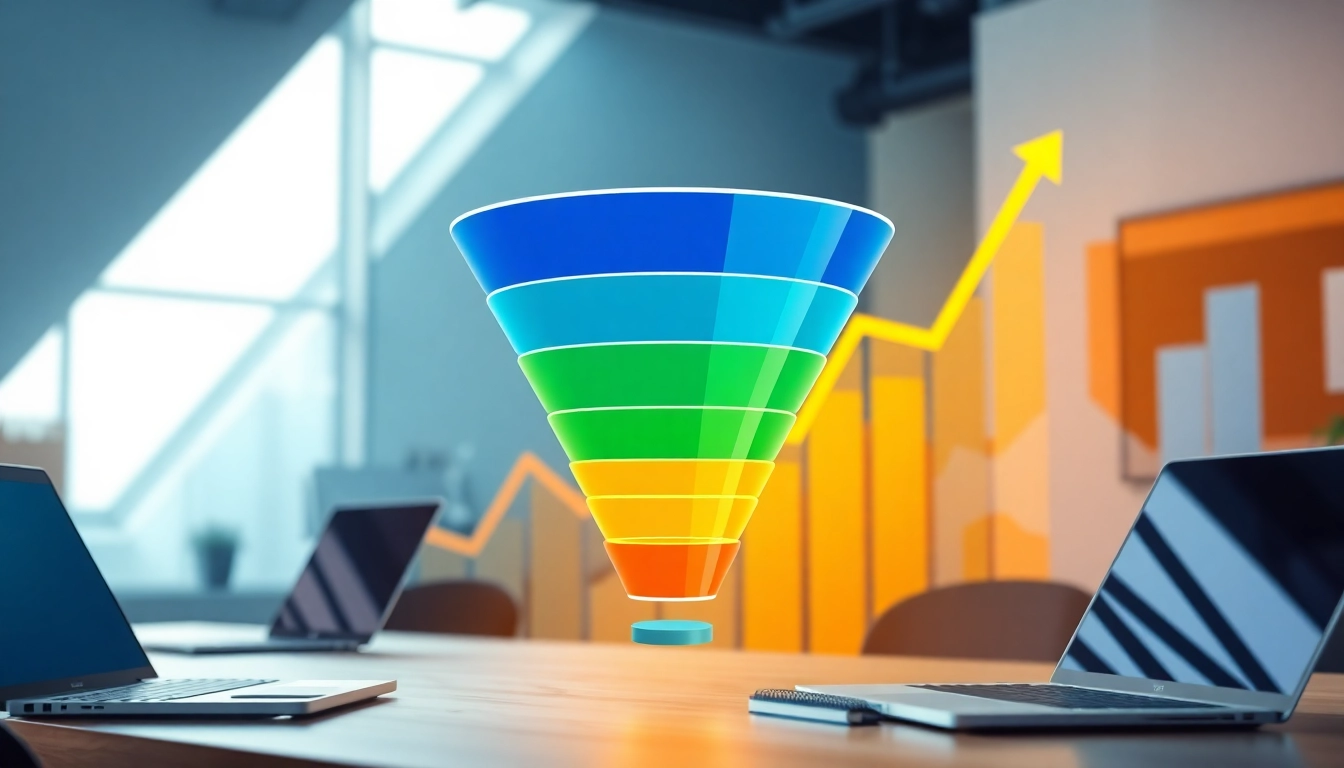Understanding Funnelology Basics
Funnelology encompasses the intricate study of sales and marketing funnels that guide potential customers through a systematic journey towards making a purchase. This field of knowledge is essential for marketers, entrepreneurs, and business strategists who seek to optimize customer acquisition and retention. At its core, Funnelology emphasizes the importance of designing effective funnels that cater to the needs and behaviors of target audiences, focusing on conversion optimization and sustainable growth.
Defining Funnelology within Marketing
Funnelology is often seen as a vital component of digital marketing. The primary purpose of any funnel is to convert potential customers into buyers. It strategically directs users from awareness of a product or service to the final action of purchasing. Funnelology digs deeper into understanding customer psychology, mapping their journey, and creating optimized touchpoints to enhance their experience. Its application spans across various marketing channels including social media, email marketing, and website interactions.
Historical Context of Marketing Funnels
The concept of a sales funnel is not new; it has evolved over decades. Traditionally depicted as an inverted pyramid, the funnel visually represents the stages that potential customers pass through—from awareness, interest, and decision-making, to action. Early marketers focused mostly on the broadest aspect – attracting attention. However, the sophistication of modern marketing necessitated a more nuanced understanding of consumer behavior, leading to the development of funnels that not only consider the initial attraction but also nurture and retain customers post-purchase.
The Key Components of Funnelology
At the heart of Funnelology are several key components that contribute to effective funnel construction:
- Awareness: This is the top layer where potential customers first encounter a brand.
- Interest: Once awareness is achieved, potential customers develop interest, spurred by valuable content and engagement strategies.
- Consideration: This stage is where leads weigh their options and consider making a purchase. Providing comparisons, testimonials, and case studies is crucial here.
- Intent: Here, potential buyers show signs of intent, such as adding items to their shopping cart or signing up for newsletters.
- Conversion: This stage represents the final action where prospects become paying customers. Here, purchase processes must be seamless.
- Retention: Post-purchase follow-up strategies like loyalty programs are essential for retaining customers and encouraging repeat business.
Types of Funnels in Funnelology
Sales Funnels vs. Marketing Funnels
Sales funnels and marketing funnels serve distinct purposes in the overall funnel process. Sales funnels specifically aim to close deals and convert leads into customers, while marketing funnels are broader and focus on attracting potential customers. Understanding the difference between these two types of funnels is pivotal for creating an effective overall strategy.
Lead Generation and Conversion Funnels
Lead generation funnels focus on attracting potential customers and collecting their information for future marketing efforts. These funnels typically utilize content offers—I.e., free eBooks, webinars, or trials—to entice users to provide their contact information. Conversely, conversion funnels are designed to move leads through the buying process, employing tactics such as effective sales copy and urgency strategies (e.g., limited-time offers) to encourage immediate purchases.
Understanding Email Funnels
Email funnels play a crucial role in funnelology as they directly facilitate communication with leads and customers. These funnels can be segmented based on user behavior (e.g., opens, clicks, purchases) to provide targeted content that speaks to each stage of the funnel. Effective email funnels include welcome emails, nurturing sequences, promotional campaigns, and re-engagement tactics designed to bring lapsed customers back into the purchasing fold.
Creating an Effective Funnelology Strategy
Identifying Your Target Audience
The foundation of a successful funnel strategy lies in understanding your target audience. This involves developing comprehensive customer personas, which include demographic information, pain points, motivations, and buying behaviors. Conducting market research, analyzing customer feedback, and utilizing tools like surveys or interviews will equip marketers with the insights necessary to conceptualize funnels tailored for their ideal customers.
Crafting Compelling Funnel Content
Content is the backbone of any successful funnel strategy. Each stage of the funnel calls for specific types of content that resonate with the audience’s current mindset. For example, blog posts, social media updates, and videos can generate initial awareness, while case studies, product demos, and testimonials play a pivotal role in nurturing leads. Compelling content is not only informative but also strategically designed to lead the audience closer to making a purchasing decision.
Tools and Platforms for Funnel Development
Various tools and platforms can streamline the creation and management of funnels. From customer relationship management (CRM) software to email marketing tools and landing page builders, the right technology amplifies the effectiveness of funnel strategies. Marketers can leverage platforms like analytics tools to track user behavior and measure funnel performance. Conversion rate optimization tools can also assist in adjusting messaging and design to improve funnel outcomes.
Measuring Success in Funnelology
Defining Key Performance Indicators (KPIs)
To effectively measure the success of funnels, it is vital to establish clear Key Performance Indicators (KPIs). KPIs may include conversion rates, customer acquisition costs, average order value, and customer lifetime value. By continually tracking these metrics, marketers can gauge the performance of their funnels and identify areas for optimization. Establishing KPIs at the onset ensures that strategies align with overarching business objectives.
Analyzing Conversion Rates
Conversion rate analysis is crucial for understanding how effectively a funnel converts prospects into customers. This analysis requires kicking off with a baseline conversion rate and regularly measuring shifts as adjustments are made to the funnel. Issues such as drop-off rates at specific stages indicate where potential customers are losing interest, allowing for targeted improvements to retain engagement.
Adjusting Strategies Based on Data
Data-driven decision-making is at the heart of effective Funnelology. By analyzing conversion data and user interactions, marketers can uncover insights that inform strategy adjustments. Whether it involves modifying content, altering funnel stages, or URL optimization, continual testing and iteration are paramount. Regularly revisiting analytics ensures that the funnel remains relevant and effective in meeting evolving audience needs.
Advanced Techniques in Funnelology
Integrating Automation in Your Funnels
Next-level Funnelology embraces automation to create a seamless experience for potential customers. Automation can manage repetitive tasks, like sending follow-up emails after a lead contacts your business or re-engaging lapsed customers with tailored content. This frees marketers to focus on strategy development and personalization, enhancing overall funnel performance.
Implementing A/B Testing for Optimization
A/B testing—comparing two versions of a marketing element to judge performance variance—can significantly aid in funnel optimization. Whether testing headlines, visuals, calls to action, or page layouts, A/B testing helps pinpoint elements that resonate best with audiences, allowing marketers to refine their strategies for maximum impact. Regular testing fosters a culture of continuous improvement at every stage of the funnel process.
Utilizing Retargeting Strategies
Retargeting, or remarketing, allows marketers to re-engage users who interacted with their funnel but did not convert. By displaying ads to these potential customers across various platforms, businesses can keep their products and services top-of-mind. An effective retargeting strategy often includes tailored messaging based on user behavior, guiding prospects back towards the final conversion.



